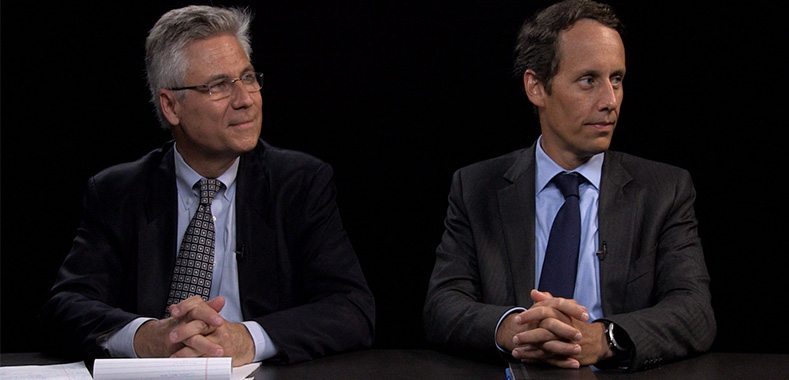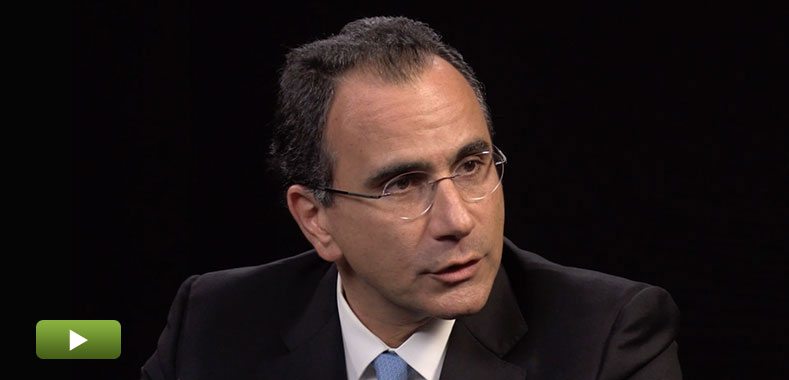LatAm LPs Ramp Up Real Estate Exposure
Domestic investors in Latin America are turning their attention to real estate as they look for greater yields on their investments, according to experts from PGIM Real Estate and GID International.
The growth of domestic sources of capital will be a game-changer for the region’s commercial real estate markets, say PGIM Real Estate CIO, Americas, Alfonso Munk, and GID International senior managing director Ken Munkacy—not just in terms of capital raising but also for market liquidity.
Transcript Download Transcript
LatAm LPs Ramp Up Real Estate Exposure
Real Estate Investing in Latin America
Zoe Hughes, PrivcapRE: I’m joined here today by Alfonso Munk, CIO of the Americas of PGIM Real Estate, and Ken Munkacy, Senior Managing Director of GID International. Thank you both for joining me today.
Ken Munkacy, GID International: Nice to be here.
Alfonso Munk, PGIM Real Estate: Thank you.
Hughes: When we’re looking and talking about commercial real estate opportunities in Latin America, one of the major failings we make as international investors, managers and even the media is really addressing this landscape through the eyes of foreigners. We look at investor appetite as foreign investors. Yet we seem to discount the domestic appetite and domestic institutional investors there. I argue that actually they are a real force to be reckoned wit and really a growing force within the region. Are sleeping giants actually about to be woken up?
Munkacy: I believe they are in this concurrent activity going on in four or five major Latin markets. In places like Colombia, Peru, Chile. Mexico has had a liberal pension-fund investment environment for a number of years but what’s going on now is they are easing regulations and restrictions, so we have more money that could be coming into real estate. There’s more money that could be going cross-border, not just in the region but also internationally.
Pension funds are becoming alive to the returns of the alternatives class, in general, but the real estate in particular and to infrastructure as well. There is a very large insurance company conglomerate called Grupo Sura based in Medellin, Colombia, who are active in six or seven countries in South America. They have 120 billion under management, yet few people outside of Latin America have really heard of them. They provide a variety of products to their investors. They are ramping up for more and more real estate infrastructure and alternative investments.
Hughes: Alfonso, is this a game changer for the region, in terms of this growth of the domestic investors and their appetite for real estate?
Munk: I think it’s one of the most important game changers. I agree with Ken—this is really an important transformational aspect of not only the American economies but the impact it’s going to have in real estate. These pension funds, in essence, come because people have been formally employed and are contributing part of their salary to pension.
This is new in Latin America. If you look at the importance of this, it is going to be huge and is not only providing more capital given that they are able to invest in alternatives, including real estate, but is creating liquidity in the market. It’s creating growth in the real estate sector and is making the sector more institutional.
Just to give you an idea: in PGIM Real Estate, if you look at us 10 years ago, 100% of our capital in the region came from international investors—mainly U.S. and some sovereign wealth funds. Today, over half of our capital is local. So, we manage vehicles over 50%, 55% of the capital is coming from the local pension funds.
Hughes: It’s not just about capital sources but it’s also this is competition for you as well, in terms of, say, Colombia, [where] there’s a lot of local capital on the ground. Are they happy to accept lower returns? Does this become more added competition for you in terms of growth of domestic investors?
Munk: I don’t think so. I always welcome competition. They are not yet investing directly in real estate, so they have to go do it through vehicles. So, they are not competing with us in respect of doing individual projects. What does change, which is going to impact more international investors, is the fact that these local pension funds for the most part have a lower risk premium associated to the country itself. So, when an international investor looks at Mexico or Brazil, on top of the actual risk associated with the party, they put the risk premium to the country, these pension funds don’t because their capital is local, their currency is local.
Munkacy: Alfonso’s comment is a good one—I think there is more transparency coming into the market because you have local players here. Again, they are investing local capital. I think where they get hung up is going across borders. Because if they were to come, it’s one thing going from Colombia to Peru to Chile or Mexico, it’s another thing to go across the border into the U.S., where that reverse exchange rate doesn’t quite work well for them.
It’s probably going to be more intra-Latin America than external. I think that’s a good trend and I agree with his point—at some point locally, it could crowd out the foreign investors who come into these because they don’t necessarily want the yield premium. They don’t have the currency effects risk. They don’t necessarily read The Wall Street Journal. They understand the local scene a lot more and they are indigenous investors. They don’t necessarily need to get over 20% returns on a risk-adjusted basis. They can settle for lower-mid teens and have a great investment day.
Hughes: But, in essence, that helps the exit and the liquidity in the market, which is fundamental to us all doing investments there, whether there is a family office or a pension fund, as a fund manager. Give me a sense of that liquidity—the growth of liquidity within Latin America regionally but also perhaps as the FIBRA’s as well.
Munkacy: You’re raising a good point and that’s we’ve been really talking about investment funds and direct investment through a fund into an asset, but the public market’s also quite vibrant. There’s 20 or 25 listed entities in Brazil. The FIBRA market in Mexico is vibrant, [as in] handful of other countries. Over time, I think local market players will have listings, so that becomes available.
There are some index funds here in the U.S. that invest in Latin America—publicly listed vehicles. That’s another alternative with easy liquidity and has been attracting other investors, institutional from this side, who want to play in the Latin America real estate game but they don’t want to necessarily go long into a fund life and they can come in and out as the market dictates.
Munk: Yes, I think it’s a second trend. You mentioned the emergence of local capitals. One of the trends that you are mentioning here is capital markets trend, which has a component of local capital and has been also very transformational. About half of the REIT market in Mexico, the FIBRA’s capital, comes from local institutions, whether it is the pension funds, insurance companies or some high net worth. The other half comes international.
I would say the REITs still need to go through a lot of maturity, whether it’s from a governance perspective or from size, [to] become bigger, more liquid, prove to the investors that it’s a well–established business. It still has some time to go, so I think it’s very promising and it will help create a bigger market in the real estate sector.
Also, one of the things that people often oversee, even for the domestic capital, is allowing the small investor to have real estate investments. In the past, whether it was Mexican or international investors, they couldn’t buy real estate because they couldn’t buy an entire building. Now, with the emergence of the REIT, you can buy the shares of those companies that have the underlying assets as real estate and make successful to the retail sector. The retail sector is going to be very big, as well, moving forward.
Munkacy: The U.S. REIT market is three times or more the scale of the FIBRA market, but our market and economy are so much larger, so I am not going to say the FIBRA market is going to be a $500-billion asset class, but it’s conceivably going to be over $100 billion in short order. So, as Alfonso is saying, it’s not just institutions but the “ma–and–pa” retail investor who comes in to the market because they have pension plans that they can invest in as well. I think it’s a great future for both the retail and the institutional investor.






